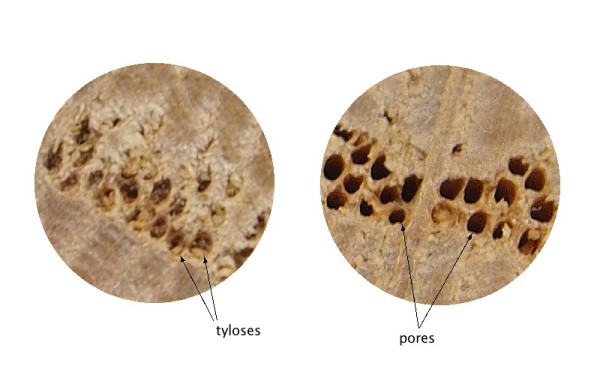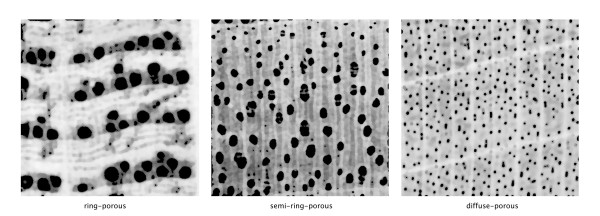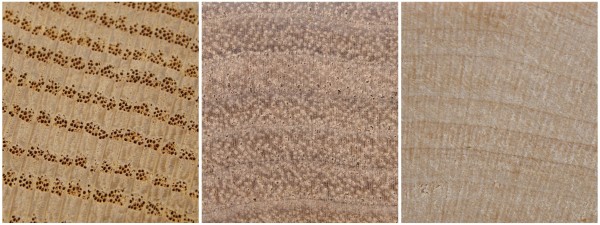As mentioned in a previous post, the rings form the most visible structure in a transverse surface, or cross-section through a tree, or branch. Can it be used to identify a piece of wood? Only vaguely in so much as some trees have very distinct rings, for example oak, ash, douglas fir, maple. Others have more obscure rings, e.g. birch, beech, ebony, purpleheart, poplar. This is very evident in tropical hardwoods where growth can occur all year round.
More important are pores. Pores, or vessels, are the small circular holes visible on a cross-section of wood, and do not appear in softwoods. These vessels serve as the tree’s plumbing, transporting sap throughout the tree. The size and distribution of these pores helps determine the type of wood. So ask the question – does a cross-section of the wood show pores? YES – then it’s a hardwood, NO, then its a softwood. Some pores have contents, sometimes a result of transforming from sapwood to heartwood. One of these fillers are tyloses- which grow in open pores and can completely fill them. A good example is the difference between red and white oak. White oak contains tyloses, and does not absorb water the way red oak does, making it better for shipbuilding (check out this video to see why).

Hardwoods have three different types of pore arrangement:
- ring-porous: pores occur mainly in the earlywood, causing an abrupt transition to latewood which is very distinct. Latewood pores are more difficult to see. (oak, ash)
- semi-ring-porous: The pore transition from large to small diameter within a growth ring is gradual. (black walnut, hickory)
- diffuse-porous: The pores are uniform in size across the entire growth ring. (poplar, maple), often with no clear earlywood/latewood pore arrangement.
Here are some examples:
And a close-up of what the pores would look like:




